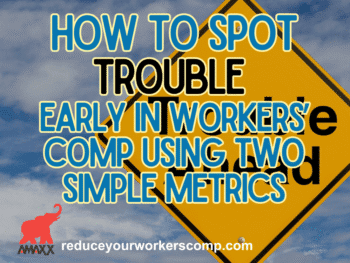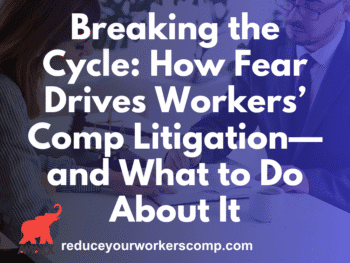In litigation — especially the long processes of workers compensation, known to drag on for a decade or more — some procedures, normally making sense seem counterproductive. After all, why commit time and resources, both always so limited, to events which may not occur? Isn’t it better to save the efforts until they are needed?
That sounds sensible but it assumes everything else will remain the same until the right time comes along. In litigation and claims, however, evidence and witnesses slowly, but surely, fade away. Every year there will be less of each, unless measures are taken to preserve information which may be needed, in some cases many years later.
Often, in work comp, a claim may appear to be small and limited – and then, years later, the claim is reopened and becomes large indeed. The claims unit then must scramble to collect certain information only to discover much, most or all of it has been “purged,” i.e., lost forever. How much better it would be if basic information was kept, leading to recovering or preserving vital information.
Every employee workers’ compensation claim must keep certain basic information.
1. Date of hire.
2. Names and addresses of prior employers.
3. List of medical plans under which employee had coverage.
4. List of medical absences, however short, with dates of lost time.
5. Copies of medical absence certification by treating doctors.
6. Prior work comp or negligence claims, if known.
If it becomes necessary to reconstruct a worker’s medical history, the above information is used to locate information from a variety of sources.
1. A medical note purged from a doctor’s records may still exist in an old personnel file, even with a prior employer.
2. Rarely are group plan medical records purged beyond recovery.
3. Modern scanning and computer storage nearly guarantees records of surgery continue to exist somewhere, if the surgery was performed in the last 30 years.
4. The identity of an employer’s group medical plans is a public record, maintained by the United States Department of Labor.
Pulling together these types of information can save large sums, provided the name of the prior employer is preserved.
Who locates these records?
A very small, very specialized group in the field of “medical records archaeology” (yes, that term really exists) knows how to navigate the paths, assisted by attorneys with skills in subpoena and/or release of medical info.
However, the task takes a fraction of the time and expense, and produces multiples of results, if the employer provides a jump-start with the basic data. (workersxzcompxzkit)
Preserving the data, even after an employee leaves for a new job, is advisable. Old comp claims are frequently reopened for apportionment with a new claim.
Author: Attorney Theodore Ronca is a practicing lawyer from Aquebogue, NY. He is a frequent writer and speaker, and has represented employers in the areas of workers' compensation, Social Security disability, employee disability plans and subrogation for over 30 years. Attorney Ronca can be reached at 631-722-2100.
Podcast/Webcast: Claim Handling Strategies
Click Here:
http://www.workerscompkit.com/gallagher/podcast/ Claim_Handling_Strategies/index.php
Do not use this information without independent verification. All state laws vary. You should consult with your insurance broker or agent about workers' comp issues.
©2010 Amaxx Risk Solutions, Inc. All rights reserved under International Copyright Law. If you would like permission to reprint this material, contact Info@ ReduceYourWorkersComp.com.
















